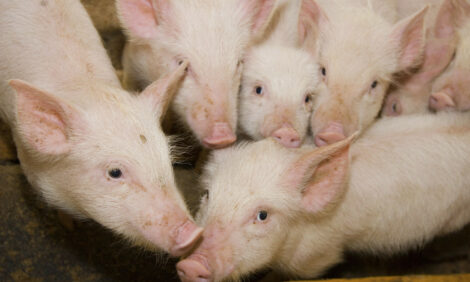



Fewer Farms, Less Land but Greater Production
ANALYSIS - The US agriculture industry appears to be contracting and consolidating with fewer farms, less land devoted to agriculture and a drop in livestock numbers, writes ThePigSite editor in chief Chris Harris.Despite the latest cattle inventory report from the USDA, which predicts a 1.4 per cent increase in heifer numbers being held back as replacement for the national herd, the report on farms, land and land in farms from the USDA NASS shows a drop in the total number of cattle operations of one per cent.
And further investigation shows that the number of heifers being retained this year, estimated at 5.21 million, is the lowest since 1986.
This sight rise in the number of heifers that it is believed will be held back could be the start of a rebuilding of the herd, but the NASS figures appear to indicate that the trend is for the opposite to happen because the number of cattle businesses is falling.
Last year there were 922,000 cattle operations with 734,000 beef businesses, down by one per cent and 60,000 dairy farms, down by four per cent.
In the pig farming sector, the number of operations has remained fairly flat standing at 69.100 farms. The vast majority of these farms, 87 per cent, are large scale operations with more than 2000 head.
The total number of farms is down slightly at 2.2 million and although the average size of each farm has risen - up by on average an acre to 420 acres - the amount of land devoted to agriculture and farming in the US has fallen by 1.87 million acres to 917 million.
The drop in the number of farms appears to be in the middle sized farms, with the small farms the very large establishments growing in numbers and the largest farms growing in size dramatically.
The number of farms valued at more than $500,000 grew by 5.9 per cent last year and the amount of land on these farms has grown by 2.5 per cent, while the land in the small and medium scale farms fell by 3.5 per cent.
Against this backcloth of a drop in the amount of land on farms, production is rising, with beef production up and more corn expected this year, indicating a rise in yields and potentially improvements in production systems.
This is all despite there being fewer cattle numbers and lower year stocks of wheat and feed grain.
The World Agricultural Supply and Demand Estimates report recently recorded that "despite expected tight fed cattle supplies, cow slaughter is expected to remain relatively strong during the first quarter and carcass weights are forecast higher" A similar picture has been drawn for pig meat production.








